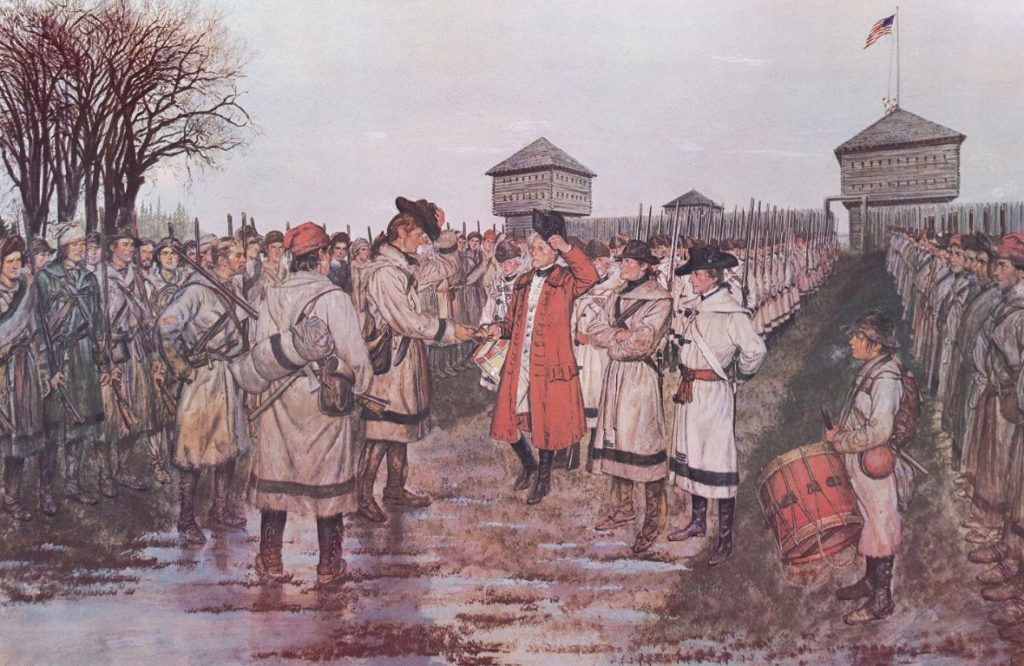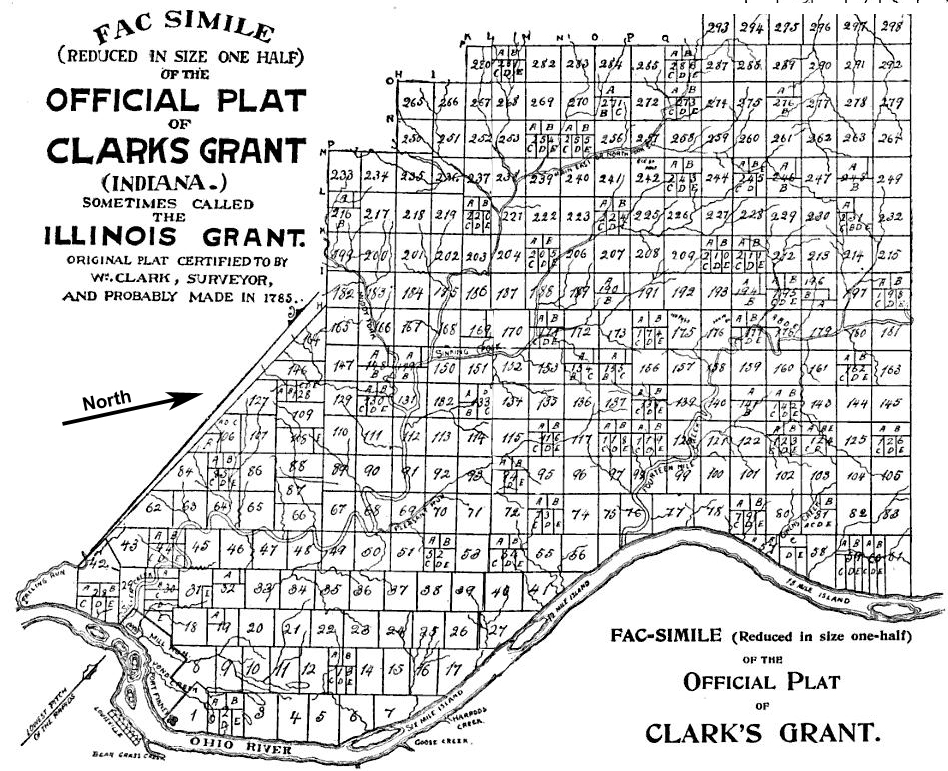Buffalo Trace Timeline
1612
Englishman Samuell Argoll mentions seeing native large cattle in the eastern United States.
February 1779
Clark captures Fort Sackville (Vincennes).

March 1779
Clark writes to Patrick Henry referencing land on the Cumberland River called “French Lick”, he was in hopes that he could get 3,000 acres he thought was his.
August 1779
Clark travels back to the Falls of the Ohio, not on the Buffalo Trace all the way, but uses what will be called in the future journeys by others as “Clark’s Trace” This is important because as future travels show, he must have encamped at the “Salt Licks” here.
October 1783
Present day Clark County, Indiana and part of Floyd and Scott counties were among the 150,000 acres of land granted in October 1783 to George Rogers Clark and his soldiers by the state of Virginia in honor of their service during the American Revolutionary War. This service includes the capture of Fort Sackville from the British in Vincennes.

August 1785
Mapmaker Filson makes first journey to Vincennes via Ohio and Wabash. Return to the Falls was via the Buffalo Trace with 3 Native American guides.
March 1786
Filson requests help from Clark to protect Vincennes, because of Native American raids
June 1786
Filson again travels to Vincennes via the Ohio, again uses Buffalo Trace on return to the Falls. Both of Filson’s trips take 9 days.
September 1786
Clark and militia return to Vincennes via “Clark’s Trace”. Along the way a horse is stolen, Captain Gaines writings mention a “meeting at a place called French Lick” to settle the dispute over Col James Barrett’s stolen horse. What’s important here is that within Clark’s militia the stopping place was named “French Lick”. All other accounts through the area call it something different. It takes 7 days via Clark’s Trace, cutting off two days.
1787
Gen Harmar sent to Vincennes and uses Clark’s Trace. His account of the journey calls this stopping place “Lick”. Gen Denny’s account of the same journey calls it “The Great Lick”. It takes them 7 days via Clark’s Trace. They note that there are 400 houses in Vincennes at the time and 900 French, 400 Americans.

1792
John Heckwelder (Moravian Missionary) and guides stop at “Buffalo Salt Lick” on the way to the Falls. Once again he did not call it French Lick. Read his account.
1795
Constantin Volney uses the Buffalo Trace and notes no inhabitants along the trace.
1797
Moses Austin (Stephen F Austin’s father) uses the Buffalo Trace, while leaving Louisville he notes 30 houses in Louisville
1799
Arthur St. Clair, Jacob Burnett, and a Mr. Morrison use the Buffalo Trace and report “no human life” and also note an “abandon shack on the White River,” presumably McDonald’s cabin, as he returned to Louisville because of Native American raids.
George Teverbaugh made the trip across the Trace with mail traveling a foot once a week, the 130 mile distance.
1803
Treaty of Fort Wayne grants the Vincennes Tract.
1804
Ebenezzer Buckingham surveys begin in the Orange County area.
July 1805
William Rector was hired to survey the Trace in order to lay out the Indian Treaty Line.
1807
Rangers organized to patrol the Buffalo Trace to keep settlers safe. Read more about the Indiana Rangers.
1820
Mr. Foyle began a stagecoach line on the trace from New Albany to Vincennes.
